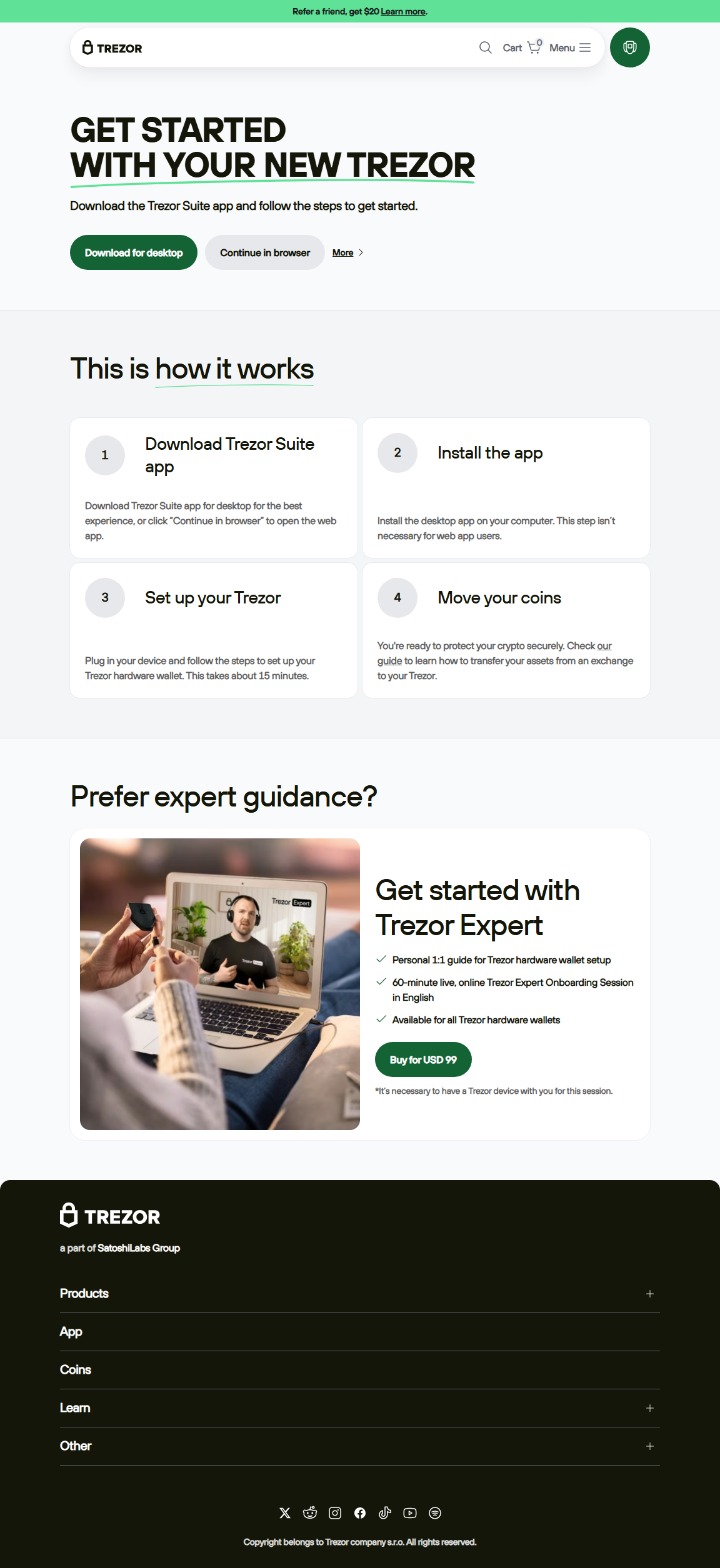Trezor Login – A Complete Beginner’s Guide to Secure Wallet Access
Learn how to safely perform a Trezor login using Trezor Suite, manage your crypto portfolio, protect your recovery seed, and maintain the highest level of digital asset security.
Understanding the Trezor Login
The Trezor login process represents the most secure way to access your cryptocurrency wallet using a physical device. Unlike traditional web-based logins where credentials can be stolen or hacked, Trezor uses a hardware-based authentication method that keeps your private keys offline.
When you log in with Trezor, you’re authorizing access between your Trezor hardware wallet and the Trezor Suite desktop application. This ensures all sensitive information remains within the hardware and never leaves it, even during transactions.
Quick Highlights
- 🔐 Secure offline authentication
- 🧠 PIN-protected login
- 🪙 Full asset control via Trezor Suite
- 💾 Recovery via 12/24-word seed
How to Log In to Trezor Wallet – Step-by-Step
Step 1: Install Trezor Suite
Go to trezor.io/start and download the official Trezor Suite for your operating system. Always verify you’re on the legitimate site to avoid phishing attempts.
Step 2: Connect the Device
Plug in your Trezor One or Trezor Model T using the original USB cable. Once connected, the device will power on automatically.
Step 3: Enter Your PIN
Use your device screen to enter the PIN securely. The layout randomizes each time to prevent pattern tracking.
Step 4: Confirm Access
Once the device prompts, approve the login request on your Trezor to access your portfolio through Trezor Suite.
Troubleshooting Common Trezor Login Issues
| Issue | Solution |
|---|---|
| Device Not Detected | Check the USB cable, reinstall Trezor Bridge, and use the official Suite. |
| Forgotten PIN | Reset the wallet and recover using your 12/24-word seed. |
| Outdated Firmware | Update directly from Trezor Suite only. Never use unofficial files. |
| Login Prompt Missing | Restart both device and Suite, reconnect, and check for firmware updates. |
Security Checklist Before You Log In
- ✅ Always verify the Trezor.io domain before downloading software.
- ✅ Enter your PIN only on the Trezor device—not on the computer.
- ✅ Keep your recovery seed offline and stored securely.
- ✅ Avoid using public networks for transactions or login.
- ✅ Confirm all operations physically on your device.
Pro Tip
“Every time you log in with Trezor, you reaffirm control over your digital assets. Trust only what you see on your device’s display.”
Comparing Trezor Login with Regular Web Logins
| Feature | Trezor Login | Traditional Login |
|---|---|---|
| Authentication Type | Physical device confirmation | Username and password |
| Private Key Storage | Offline in device | Online, vulnerable to hacks |
| Phishing Resistance | High – hardware confirmation | Low – site credentials easily stolen |
| Recovery Option | Seed phrase backup | Password reset link |
Advanced Login Options
- Passphrase Wallets: Create hidden wallets with unique phrases for extra privacy.
- Shamir Backup: Split your recovery phrase into multiple parts for distributed security.
- Multi-signature Access: Require multiple device approvals for large or joint holdings.
Frequently Asked Questions (FAQs)
No, the physical device is essential for authentication. Without it, wallet access isn’t possible.
You can restore your funds on a new device using your recovery seed.
The login process is secure, but using private, trusted networks is strongly recommended.
No, as all sensitive data remains inside the hardware. Always verify details on the Trezor screen.
Final Thoughts on Trezor Login
Performing a Trezor login isn’t just about accessing your wallet — it’s about practicing digital sovereignty. By confirming actions on your hardware device and keeping recovery seeds safe, you maintain full control of your crypto wealth. Use Trezor Suite responsibly, verify every action on your screen, and treat each login as a step toward long-term crypto security.
Keywords: Trezor login, Trezor Suite, hardware wallet security, recovery seed, passphrase wallets, cold storage.
Disclaimer: This guide is for educational use. Always download and update only from trezor.io official sources.
